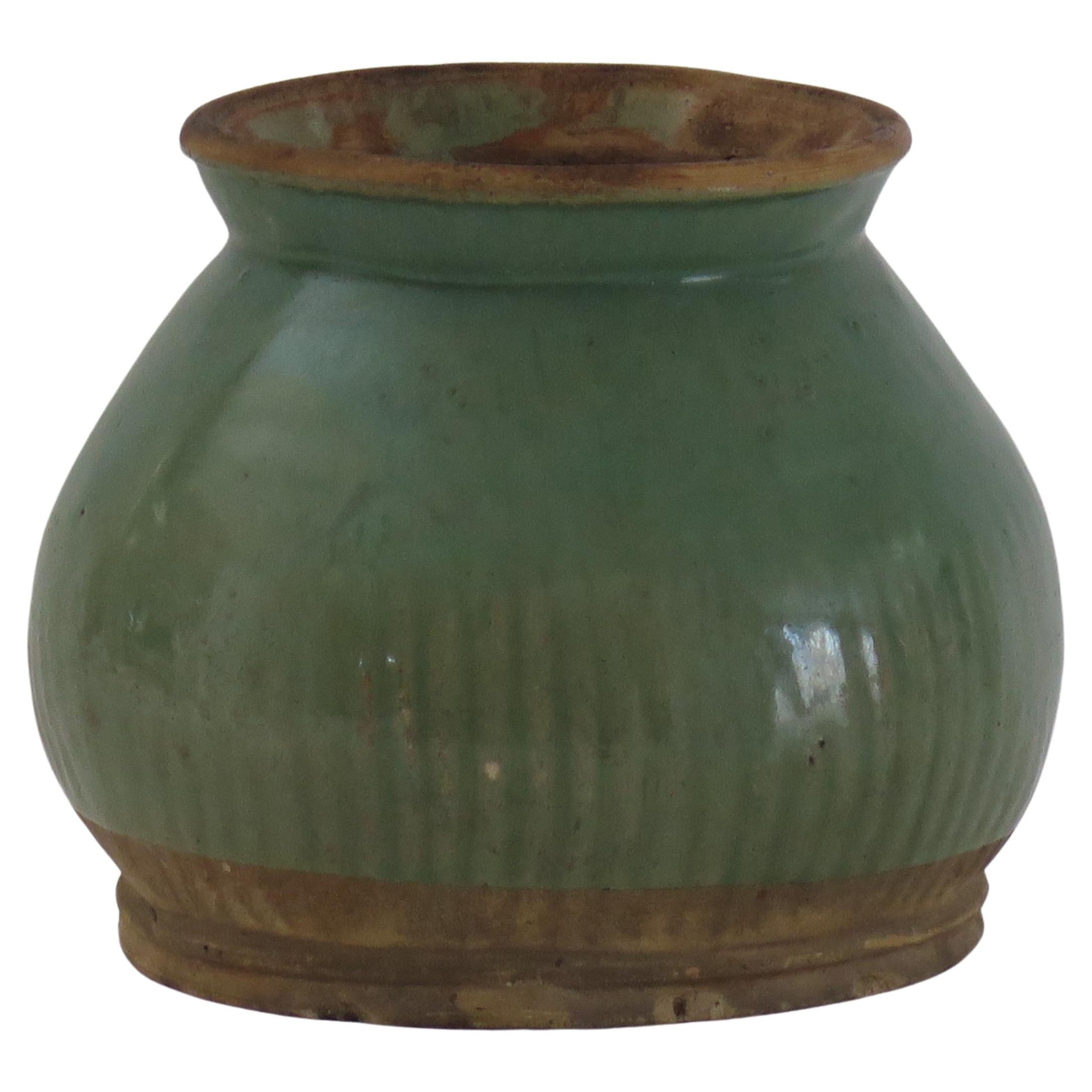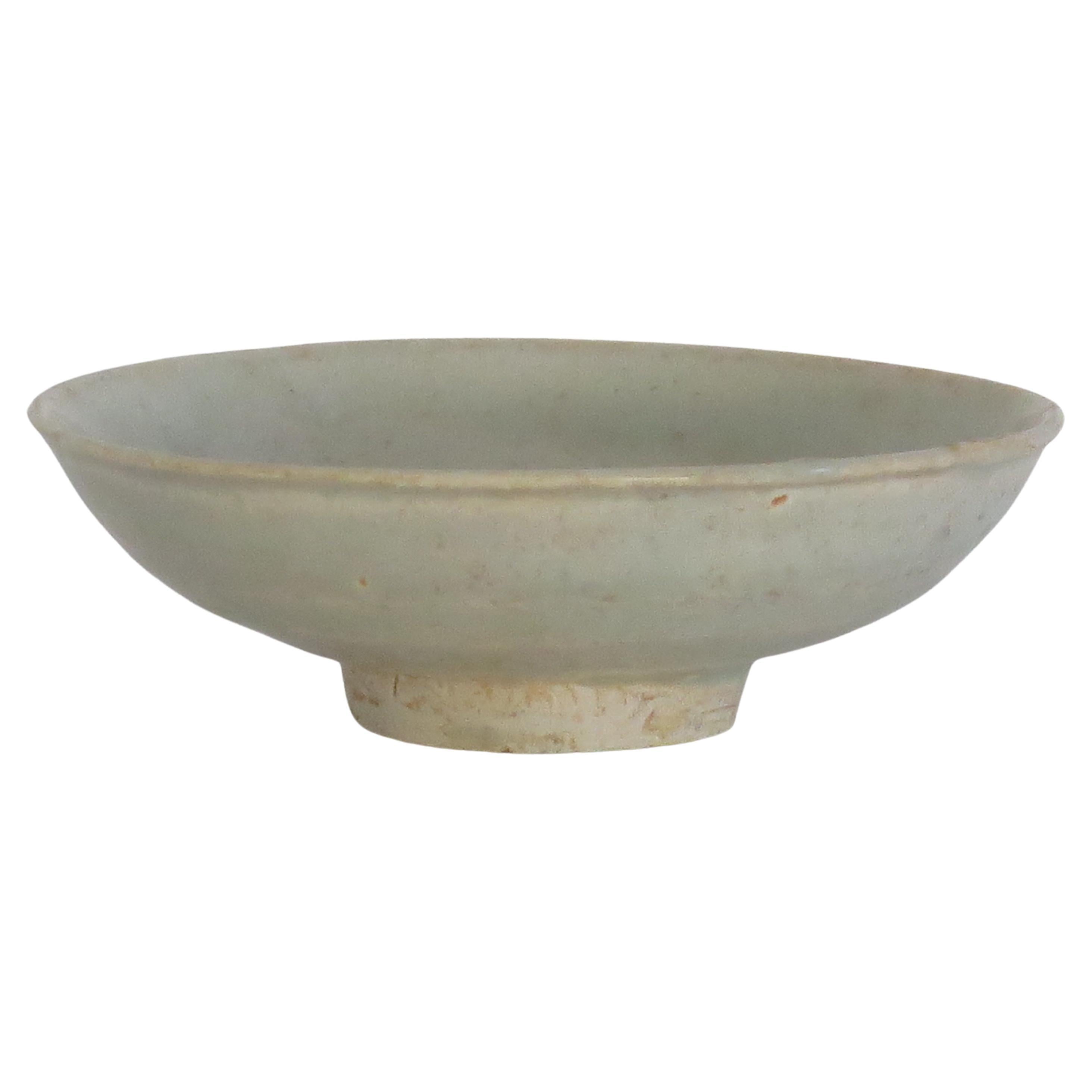Items Similar to Shunichi Yabe Kofu #3, Wind of Light, Bizen Stoneware, 2013
Want more images or videos?
Request additional images or videos from the seller
1 of 7
Shunichi Yabe Kofu #3, Wind of Light, Bizen Stoneware, 2013
About the Item
What is immediately striking about the work of Yabe is his keen and natural sense of line. The artist, in fact, takes great care in first drawing an image of the work, and after hand-building the basic form a blend of Bizen mountain and rice-paddy clays, the work is carved with a knife into the form he had envisioned. After carving, the work is first bisque-fired and then its main-firing is executed in a small wood kiln for 3 days at a temperature reaching 1180 degrees. The resulting futuristic forms of Yabe’s stoneware present fresh new possibilities for Japanese Bizen clay in the 21st century.
Shunichi Yabe (1968-) is the grandson of the Living National Treasure of Bizen, Toshu Yamamoto (1906-1994), yet his soaring sculptures are worlds apart from the traditional vessels of his famous grandfather, who was a master at the potter's wheel, and his father, Atsuo Yabe, a veteran Bizen potter. Instead, Yabe exhibits in his work a penchant for the sculptural, as can be seen from his degree in Sculpture at the Nagoya University of Arts. It is his ability to create dynamic objects not fettered by the ghosts of Bizen tradition and freed from functionality, which has made Yabe one of the most exciting artists to come forth from Bizen.
Among public collections of Japanese ceramic, the British Museum has already bought some of his works.
- Dimensions:Height: 9.85 in (25 cm)Width: 26.38 in (67 cm)Depth: 6.7 in (17 cm)
- Materials and Techniques:Ceramic,Fired
- Place of Origin:
- Period:
- Date of Manufacture:2013
- Condition:
- Seller Location:Milano, IT
- Reference Number:
About the Seller
5.0
Recognized Seller
These prestigious sellers are industry leaders and represent the highest echelon for item quality and design.
Established in 2005
1stDibs seller since 2018
10 sales on 1stDibs
Typical response time: 2 hours
- ShippingRetrieving quote...Ships From: Milano, Italy
- Return PolicyA return for this item may be initiated within 7 days of delivery.
More From This SellerView All
- Late 17th Early 18th Century Nabeshima Japanese Porcelain Plate Fruit DesignLocated in Milano, ITDish with karatuuri (melon) design Late 17th-early 18th century Porcelain decorated with cobalt blu underglaze and red fruits Diameter 15.2 cm Nabeshima ware was made at Okawachi near Arita in Kyushu under the authority of the Nabeshima clan. The feudal lords of Nabeshima were so proud of their technological skill, that throughout the Edo period (1615-1867) they gave porcelain (and swords) as presents to the lords of other provinces. Most of Nabeshima porcelain...Category
Antique Late 17th Century Japanese Ceramics
MaterialsPorcelain
- Ceramic Tea Bowl 'Chawan', by Kamisaka SekkaLocated in Milano, ITA ceramic tea bowl decorated with autumn grasses with signed and sealed tomobako. Painter and designer, Kamisaka Sekka (Japan, 1866-1942) has been one ...Category
Antique 19th Century Japanese Ceramics
MaterialsCeramic
- Saishiki netsuke of RyujinLocated in Milano, ITSaishiki netsuke of Ryujin Style of Yoshimura Shuzan, 18th century Signed: Shuzan Height: 9,8 cm Provenance: W. L. Behrens collection, no. 311 Literature: H. L. Joly, W. L. Behren...Category
20th Century Antiquities
MaterialsWood
- Large Wood Netsuke of a ShishiLocated in Milano, ITLarge wood netsuke of a shishi Kyoto school, 18th/19th century Height: 5.7cm The large netsuke with a very nice patina, showing the mythical creatu...Category
Antique 18th Century Japanese Sculptures and Carvings
MaterialsWood
- Pair of Japanese Screens with Flowers of the Four Seasons, 19th CenturyLocated in Milano, ITThis pair of screens belongs to a genre of lyrical paintings of flowers, grasses, and other plants that flourished around the middle of the 17th century and became a specialty of the Sôtatsu studio. The use of a rather complex composition of clusters of flowers and the puddling of ink was initiated by Tawaraya Sôtatsu, the founder of the Rimpa School, who was active from 1600 until 1642. The screens are abstract and decorative but there is, at the same time, a keen sense of naturalism not only in the attention to accurate detail but in the profusion of vegetation. The passage of the year is symbolized by the variety of plants that bloom in different seasons. The tarashikomi - here used on leaves, petals and trunks - is a Classic Rinpa technique in which pale black ink or a color is brushed onto an area of a painting and then either darker ink, or the same or a contrasting color, is dropped into the first before it has completely dried, creating an effect of pooled colors with softly blurred edges. Its delicacy, preciousness, and effeminacy are identified with the over-refinement of its patrons, while the vigor, monochromatic discipline, sharp observation, and virile forms of the Kano school are a testament to the vitality of the rising warrior class. The plants are almost all identifiable: in the summer-spring part, you can find wheat, buttercups, irises, begonias, hydrangeas, coral bells...Category
Antique 19th Century Japanese Paintings and Screens
MaterialsPaper
- Kogo in the Shape of a DeerLocated in Milano, ITHiramaki-e lacquer, nashiji and fundame Edo period, 19th century Length: 10.5 cm, height: 6.5 cm Since the Heian period, The theme of deer and autumn plants has been ut...Category
Antique 19th Century Japanese Lacquer
MaterialsWood
You May Also Like
- Japanese Ko-Seto Stoneware Ewer with Carved DesignLocated in Atlanta, GAOn offer is a rare Ko-seto (old seto) stoneware ewer from Kamakura period (12-14th century) Japan. The exceptionally heavily potted ewer is made of stoneware. The main body was likely hand-coiled with individually built handle, sprout and wheel-made neck and mouth assembled. It takes the basic form from the contemporary Chinese ewer...Category
Antique 15th Century and Earlier Japanese Archaistic Ceramics
MaterialsStoneware
- Chinese Export Stoneware Bowl Longquan Celadon, Early Ming Dynasty Circa 1400Located in Lincoln, LincolnshireThis is a very old interesting Chinese Export stoneware Longquan Celadon bowl, which we date to the early Ming or later Yuan Dynasty, circa 14...Category
Antique 15th Century and Earlier Chinese Chinese Export Ceramics
MaterialsStoneware
- Chinese Stoneware Bowl or Dish Longquan Celadon Incised, Yuan Dynasty 1271-1368Located in Lincoln, LincolnshireThis is a very old interesting Chinese stoneware Longquan Celadon bowl or plate with incised decoration, which we date to the Yuan Dynasty, circa 1300. The bowl is well potted on a low foot. The bowl is an olive green colour having a celadon glaze with incised decoration to its centre of what looks like a flower stem and additionally three incised string lines to the outer wall. Unglazed parts fire to a terracotta brown colour as with the base section The piece is unmarked but for similar pieces see the superb book: Chinese Ceramics by He Li published by Thames & Hudson, 1996; pages 164 to 184. NOTES Longquan is a city in South west China. These wares were produced over a long time period from 959 to 1550; which covers the Northern Song, Southern Song...Category
Antique 15th Century and Earlier Chinese Other Ceramics
MaterialsStoneware
- Chinese Stoneware Jar Celadon fluted detail, Ming Dynasty 14th to 16th CenturyLocated in Lincoln, LincolnshireThis is a very old interesting provincial Chinese stoneware Celadon Jar, probably Longquan, with fluted or ribbed decoration, which we date to the Ming Dynasty, between the 14th and 16th Centuries. The Jar has an interesting circular baluster shape with an open everted rim and low foot. It has been decorated with moulded vertical flutes or ribs to its lower half. The base is concave and fairly deep. The Jar has a mossy-olive green colour having a celadon glaze which runs from the base to the upper rim as it would have been glazed upside down, with some glaze around the top section of the inner rim. Unglazed parts fire to a terracotta brown colour at the rim, lower body and the foot rim. The piece is unmarked but for similar pieces see the superb book: Chinese Ceramics by He Li published by Thames & Hudson, 1996; pages 164 to 184. NOTES Longquan is a city in South west China. These wares were produced over a long time period from 959 to 1550; which covers the Northern Song...Category
Antique 15th Century and Earlier Chinese Ming Ceramics
MaterialsStoneware
- Small Light Blue Cloisonne Enamel Vase with an EgretLocated in Lymington, HampshireA small light blue cloisonne enamel vase with an egret, the white bird standing in water in front of a lotus plant with blue and purple flowers, the rim stamped ‘Cloisonne Japan...Category
Late 20th Century Japanese Ceramics
MaterialsEnamel
- Chinese Porcelain Bowl or Dish Longquan light Celadon, Yuan Dynasty circa 1300Located in Lincoln, LincolnshireThis is a very old interesting Chinese porcelain small Bowl of the Longquan Celadon type, which we date to the Yuan Dynasty ( 1279 to 1368...Category
Antique 15th Century and Earlier Chinese Chinese Export Ceramics
MaterialsPorcelain





